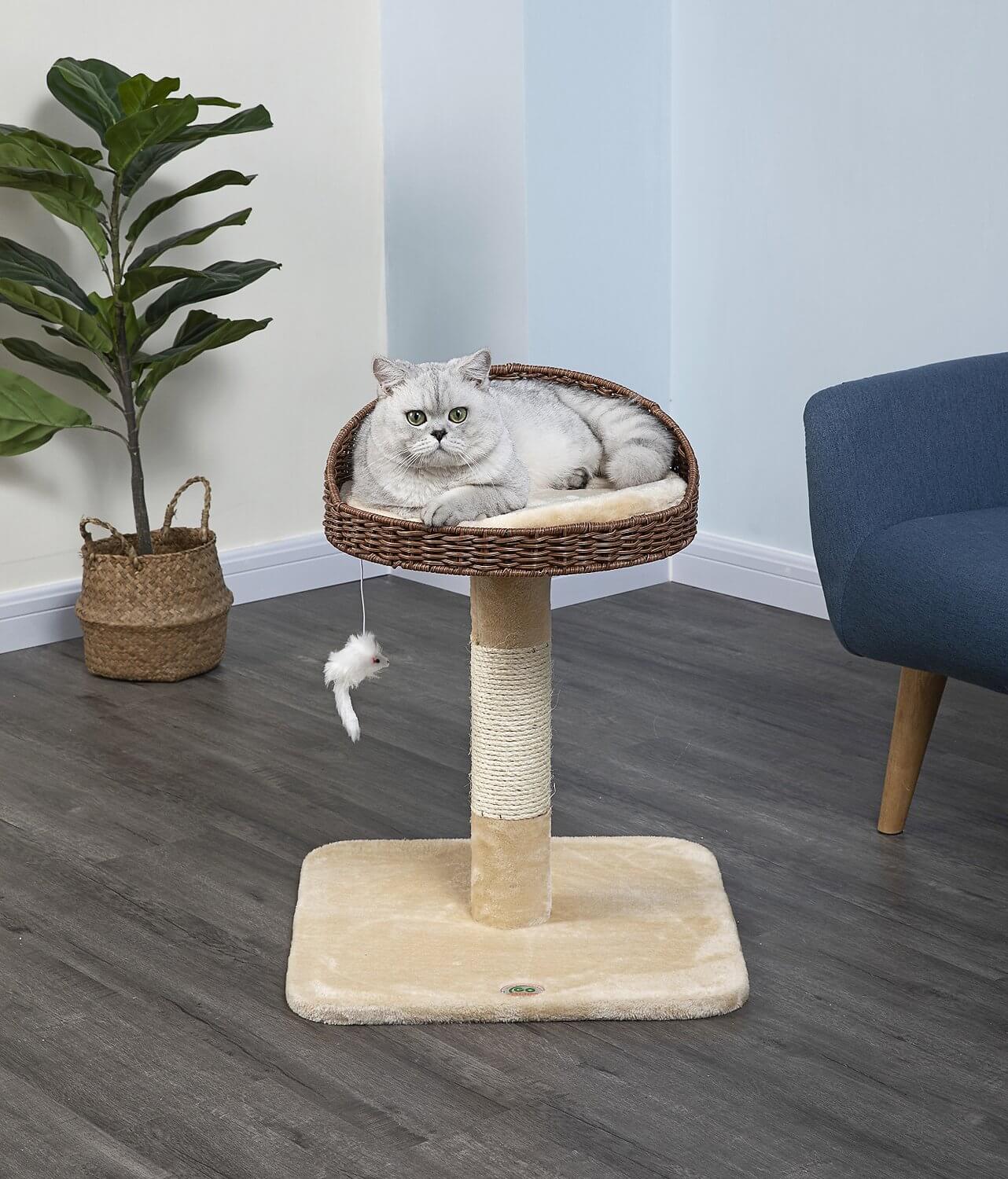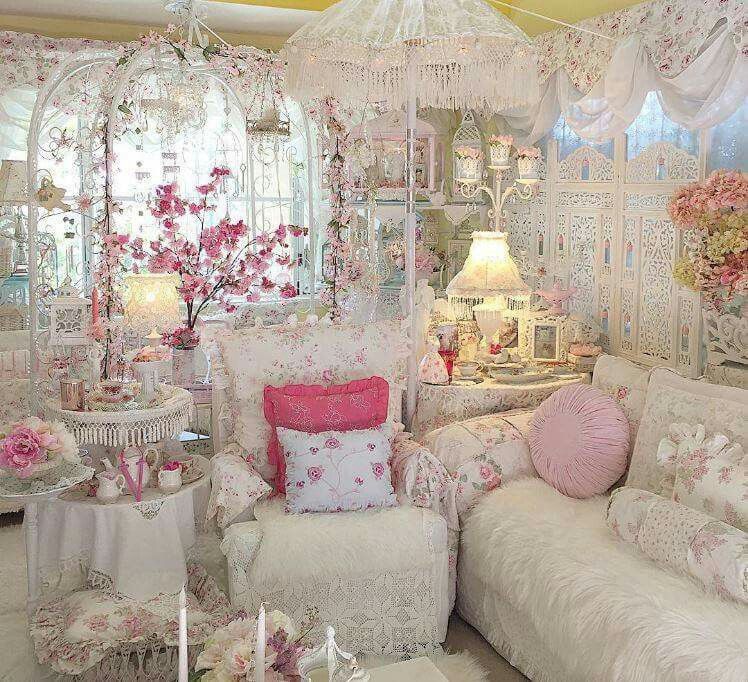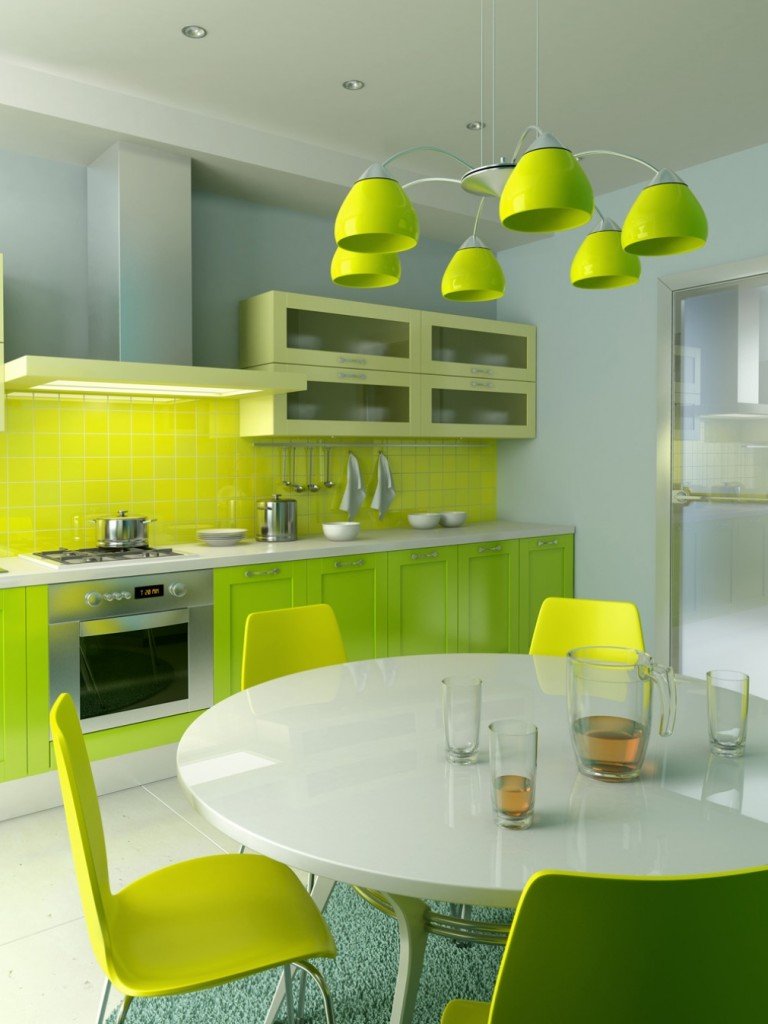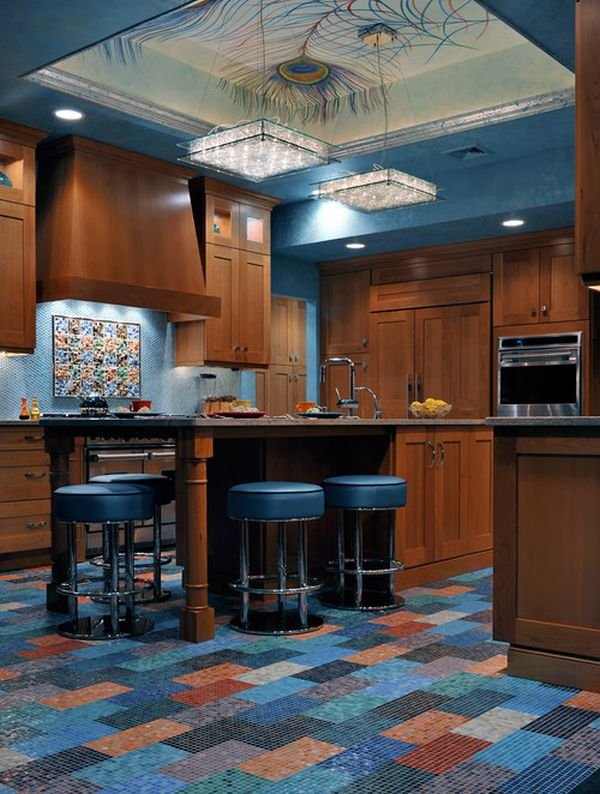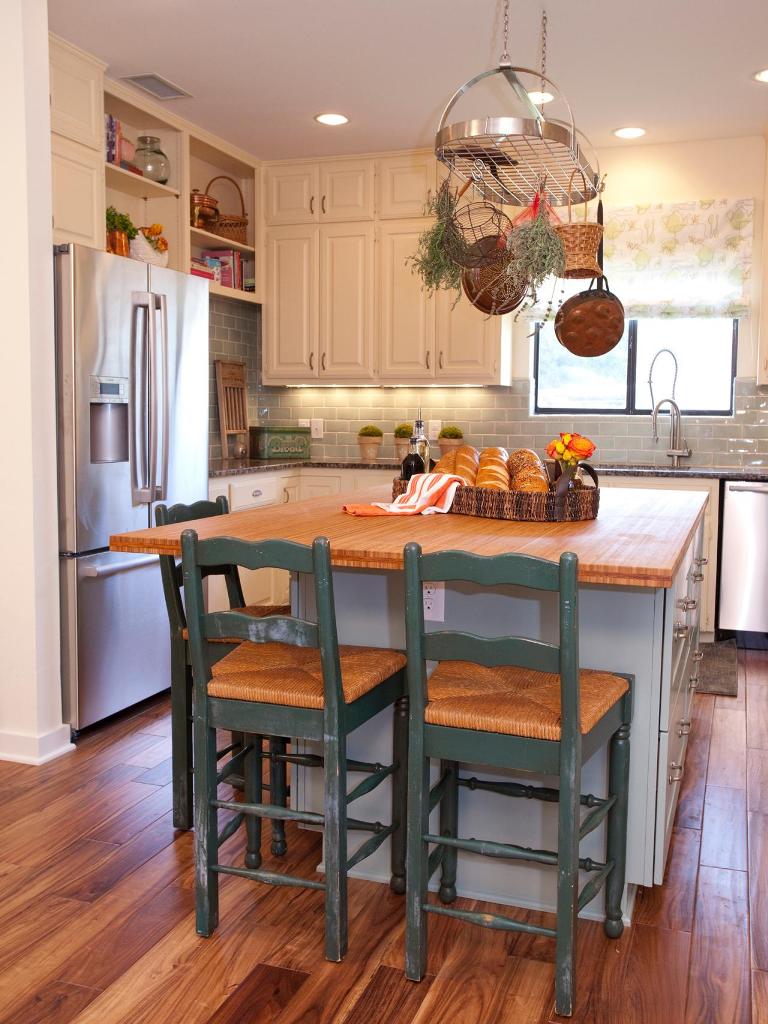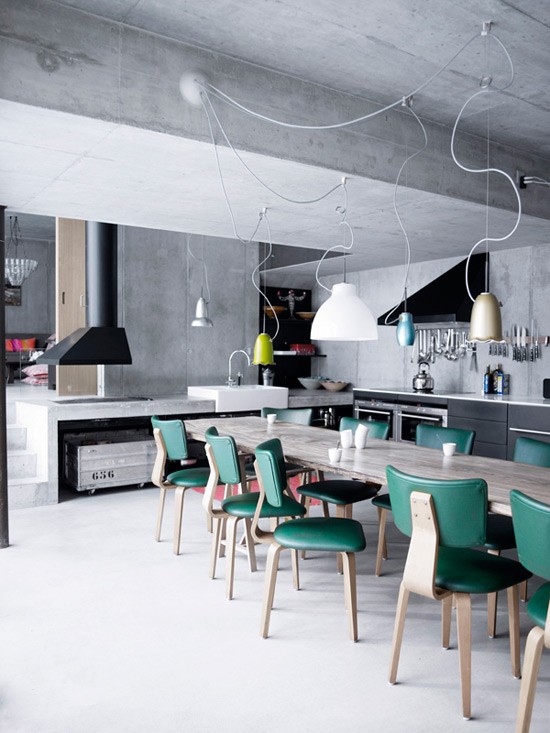See architectural tips for pets and learn how to transform your home into a safe, comfortable and welcoming environment for your pets! Those who have pets at home know that they are much more than pets – they are true members of the family. And, precisely for that reason, nothing better than including them when planning and decorating the houses. The architecture for pets is on the rise and brings many benefits to tutors and animals.

When pets are taken into account, the space becomes much more functional and safe for them – and the house much more fun and practical for us. Need to transform your space so that it becomes more welcoming to your four-legged babies? Follow us and see how many cool ideas we have for pet architecture!
What is the importance of architecture for pets?
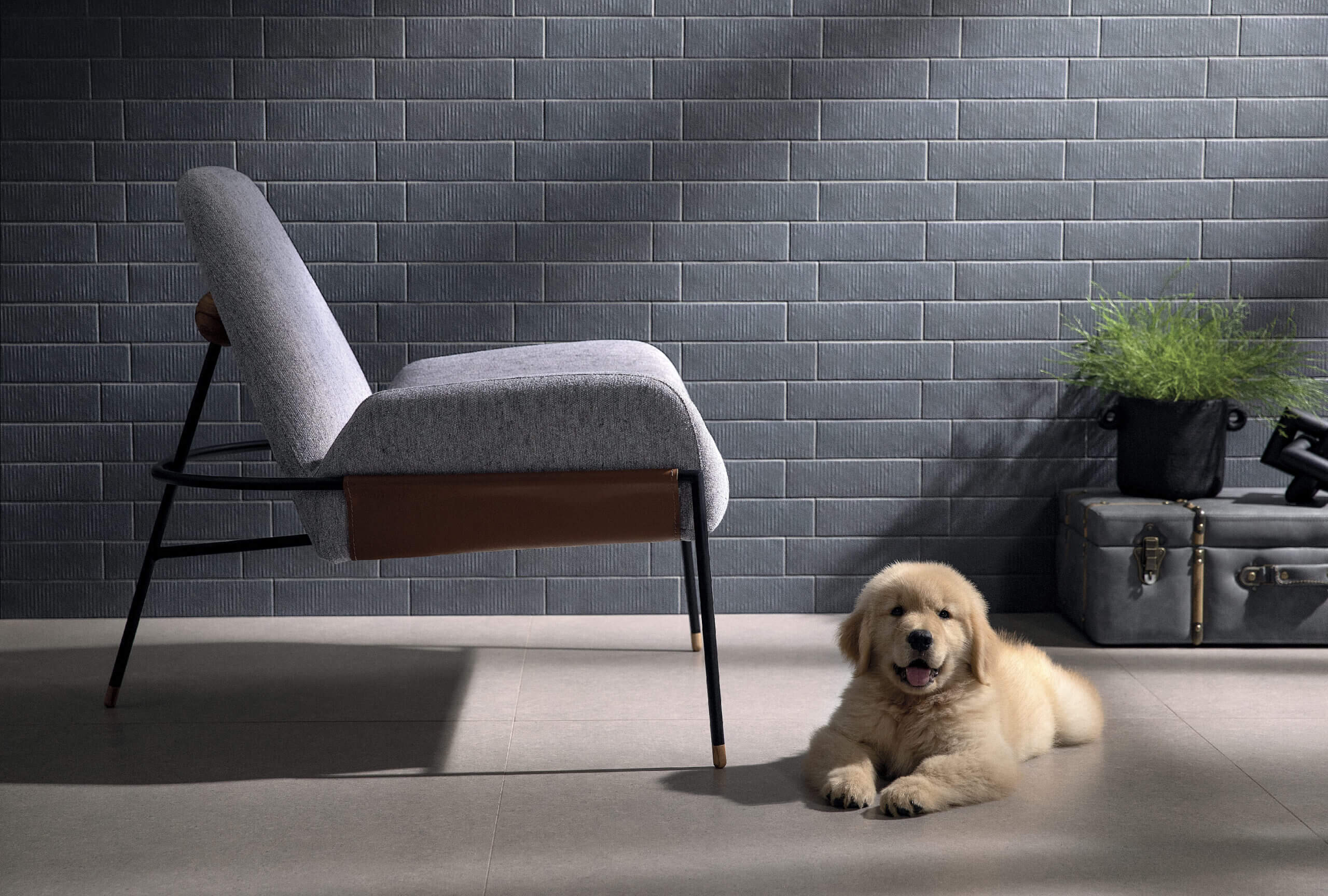 The architecture for pets is not just about aesthetics, but mainly to make the environments safer for the development of your pet
The architecture for pets is not just about aesthetics, but mainly to make the environments safer for the development of your pet
More than just aesthetics, worrying about architecture for pets is a way to promote the well-being of animals, creating a comfortable, cozy and safe environment for them.
The pets need a free and safe area inside the house to socialize with their guardians, play and develop. Therefore, it is important that this space is directed to the characteristics of each animal.
Floors, for example, should not be slippery, as, over time, this can cause health problems in animals, such as herniated discs, patellar and hip dislocations, among other bone and muscle issues.
It is also important that there is a clear area for pets to run and play, stimulating their senses. Cats, for example, love to climb and hide, and this environmental enrichment brings benefits to their behavior; pussies become less stressed and better educated.
Dogs have these needs too – and if the environment is stimulating, your friend will certainly feel less bored, which also reduces the chances of misbehavior (such as destroying toys, barking all day, or even licking until he gets hurt).
And, of course, when all these points are taken into account, the tutor’s life also gets easier. After all, the environment will be simpler to sanitize and maintain, avoiding hours of laborious routine.
What are the main architectural tips and inspirations for pets?
Are you already convinced that architecture for pets, more than an aesthetic appeal, is also a gesture of love for your pet and companion? So see how many cool tips we’ve put together to include in your next project or home renovation.
COATINGS
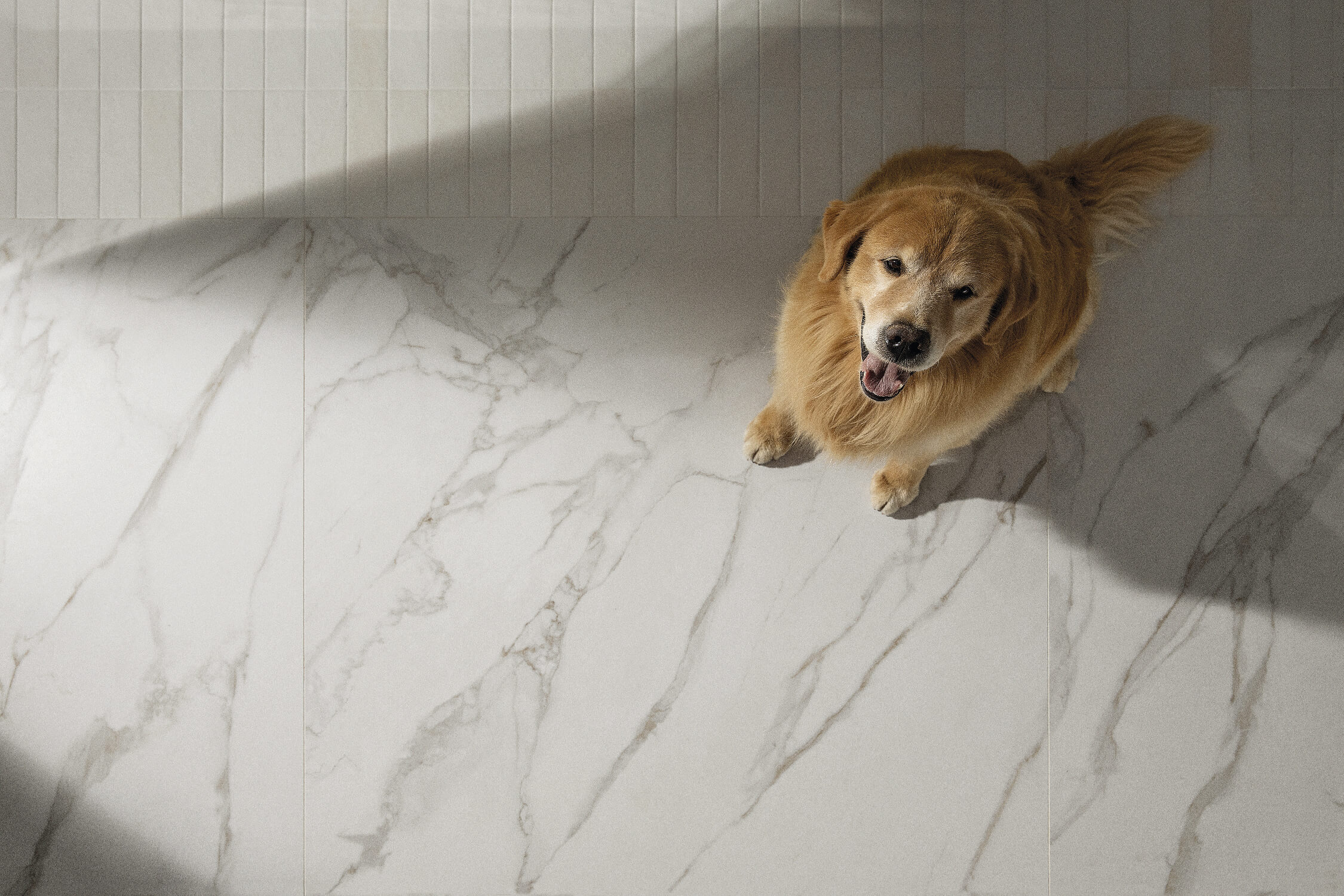 Porcelain tiles are a great ally when making your home more practical and cozy for your pets
Porcelain tiles are a great ally when making your home more practical and cozy for your pets
The choice of floor must be very well thought out in the areas where the animals will be able to circulate. As we explained, materials that are very slippery or difficult to clean should be avoided, for example: laminates, carpets or more porous stones such as marble.
In this sense, porcelain is one of the main indications, as it is easy to clean and does not absorb dirt or unpleasant odors. Another positive point is its low water absorption. So, if the animal pees on the floor, there will be low absorption of urine and there will be no proliferation of bacteria.
However, if possible, avoid polished porcelain tiles, as they are more slippery and easier to be scratched with pets’ nails. Thus, the most recommended is natural porcelain for indoor areas and EXT for outdoor areas.
In spaces where it is not possible to use this type of porcelain and you want to invest in polishing, if the animal has access to the area, it is worth investing in non-slip mats.
On the walls, you can use washable paint or the porcelain itself. Remember that cats and dogs are in the habit of rubbing themselves against walls to scratch themselves or to play – and depending on which flooring you use, it could get dirty. Porcelain tile has the advantage of being easy to clean and does not accumulate hair.
OUTDOORS
 In leisure areas, wooden porcelain tiles bring beauty, safety and practicality
In leisure areas, wooden porcelain tiles bring beauty, safety and practicality
In the external area of the house, invest in EXT porcelain, which is aimed precisely at these environments, does not slip, is resistant and easy to clean. Another alternative is to leave a space with natural grass so that the pets can take care of their needs – but, of course, it must be well cut and cared for.
If you live in apartments or townhouses with balconies, don’t forget to invest in protective screens – which should also appear on windows. This is essential to avoid accidents.
You have a balcony and dream of a beautiful wooden deck, but are you reconsidering because of the pets? Invest in wooden porcelain tiles to compose this environment, leaving it beautiful and welcoming for your best friend!
In backyards, invest in a covered area to put the houses and a space where your animals can sunbathe.
FURNITURE
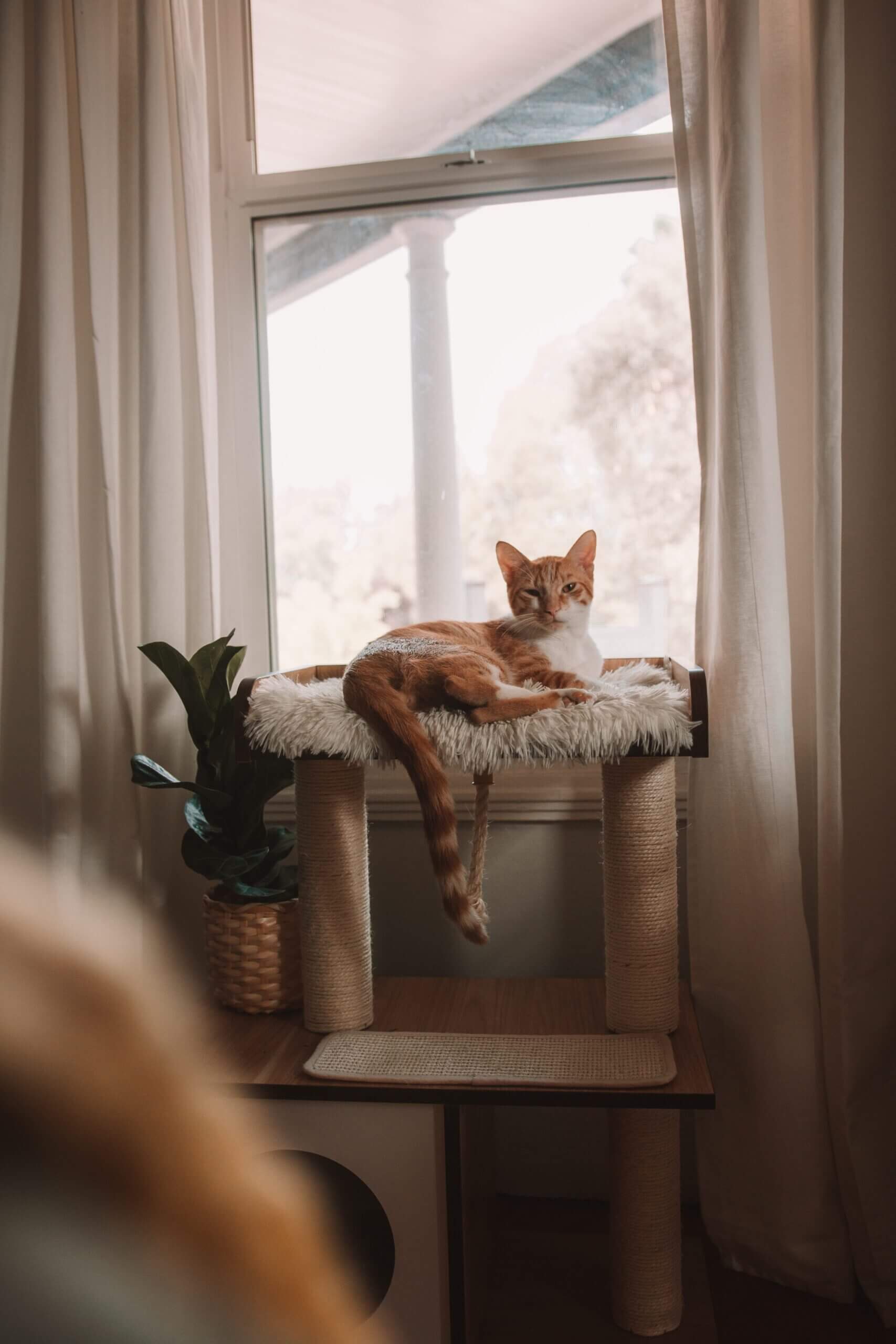 Enriching the environment helps reduce your pet’s stress
Enriching the environment helps reduce your pet’s stress
The furniture is a separate item that helps to decorate and also to bring environmental enrichment to the animals. With the architecture for pets on the rise, we have already been able to find many lines of furniture for them.
Cats, especially, are the ones that most need this attention. Give preference to furniture that can be scratched (without this damaging its aesthetics or putting the pussy’s health at risk) and spread some scratches around the house.
Because they love to climb and explore higher places, you can use stair-shaped niches to incorporate into the decor and create a really cool environment for them, especially if you live in an apartment.
As for dogs, as they have greater access to the street, prefer furniture that is easy to clean and that is not composed of toxic materials. If you have puppies at home, avoid furniture with wooden feet, because it is normal that at this stage they look for something to chew.
In the case of upholstered furniture, such as sofas, armchairs and chairs, opt for versions with synthetic fibers instead of natural ones – and the tip of waterproofing and shielding the fabric to protect against unforeseen events is also worth mentioning.
Compact environments require different solutions , such as multifunctional furniture: chairs with space for pets to sleep underneath, armchairs with “nets” for the cats, shelves and potted plants with hiding places, sofa with tunnels, closet with built-in sandbox, servant- mute with walks, among others.
Don’t forget to think about storage solutions such as closets and drawers in the laundry or laundry area for collars, rations and other items.
DECORATION
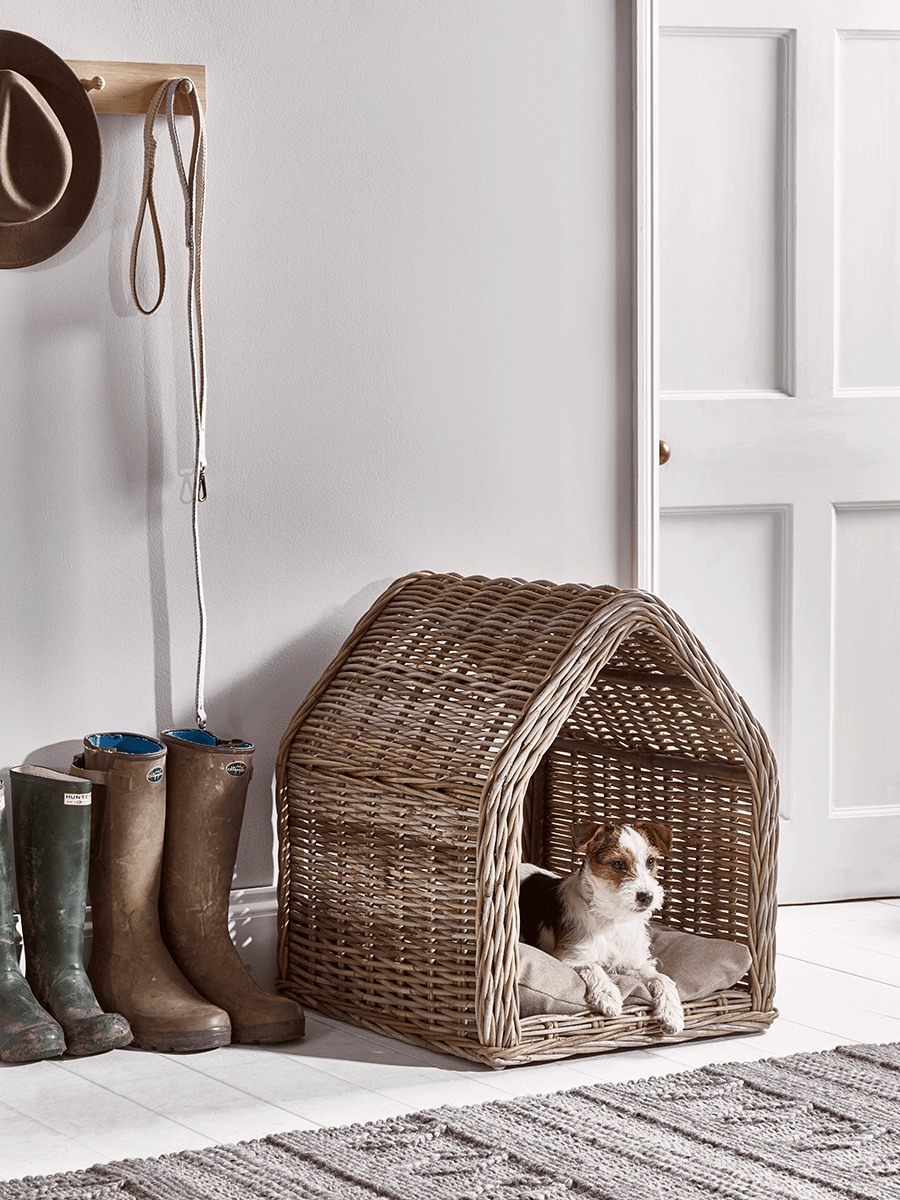
The decoration, of course, is also part of the architecture for pets and leaves the house with the personality of all the residents, including those with paws and tails.
Regarding the colors of the walls, if the environment is not too small, it is worth betting on a little darker tones, which “hide” the stains that may appear. If you are going to use rugs, the tip is to invest in sisal, which is more resistant and easier to clean.
Score the rest of the décor with objects that remind your pets, such as photographs, pictures and even toys that can be organized in a playful and fun way.
And, of course, don’t forget to separate specific corners for food, bathroom and sleeping. It is important that the food place is far from where your pet needs.
After these architectural tips for pets, do you already know how to make your house more cozy for all residents, including the four-legged ones?

